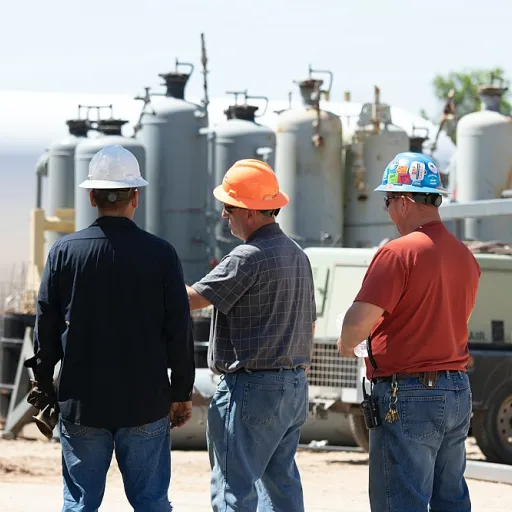
Understanding the risks of dust in seed handling
Why Dust is a Serious Threat in Seed Handling Facilities
Dust is an ever-present challenge in seed handling and agricultural processing facilities. When seeds are moved, cleaned, or processed, fine dust particles are released into the air. These particles are not just a housekeeping issue—they can pose significant risks to both safety and operational efficiency.
- Combustible dust: Many types of grain and seed dust are combustible. If not properly managed, these particles can accumulate and create an explosive atmosphere. Grain dust explosions have caused severe disasters in processing facilities across the UK and globally.
- Health and safety: Inhalation of dust particles can impact respiratory health. Prolonged exposure may lead to chronic conditions for staff, making dust control a critical part of workplace safety protocols.
- Operational impact: Excessive dust can interfere with machinery, reduce visibility, and increase the risk of slips or falls. This can lead to costly downtime and maintenance issues.
Effective dust management is not just about compliance with UK regulations and NFPA standards—it is essential for protecting your team and your facility from dust disasters. Advanced dust collection systems, such as those provided by Camfil APC, are designed to capture and control dust at the source, reducing the risk of explosions and improving air quality.
Understanding the risks is the first step in managing dust in seed handling operations. Early recognition of warning signs, implementing robust control measures, and ongoing staff training are all vital for maintaining a safe and compliant environment. For those looking to further enhance operational efficiency in related office processes, you may find this guide on streamlining label printing in your UK office helpful.
Recognising early warning signs of dust disasters
Spotting the Early Indicators of Dust Hazards
Effective management of dust disasters in seed handling operations starts with recognising the early warning signs. Early detection is crucial for maintaining safety and preventing costly incidents in agricultural processing facilities. When handling grain seed, even small changes in the environment can signal a growing risk of dust explosions or other disasters.- Visible Dust Accumulation: If you notice dust particles settling on surfaces, equipment, or in the air, this is a clear sign that dust control measures may not be effective. Regular inspections should focus on both obvious and hidden areas where dust can build up.
- Unusual Odours or Haze: A musty smell or visible haze in the facility can indicate high levels of airborne dust. This is particularly concerning in processing facilities where combustible dust is present.
- Frequent Filter or System Blockages: Advanced dust collection systems, such as those from Camfil APC, are designed to handle large volumes of dust. If filters or ducts are clogging more often, it may signal that your dust management strategy needs review.
- Static Electricity or Sparks: The presence of static discharge or small sparks in grain handling areas is a serious warning. These can ignite combustible dust, leading to explosions if not addressed promptly.
- Increased Maintenance Needs: If equipment requires more frequent cleaning or repairs, dust particles may be interfering with machinery. This not only affects safety but also operational efficiency.
Implementing effective dust control measures
Key approaches for reducing dust hazards in seed facilities
Managing dust in seed handling operations is crucial for preventing disasters and ensuring the safety of your facility. Effective dust control measures not only protect staff but also help maintain compliance with UK regulations and recognised standards, such as those set by the NFPA for combustible dust. Below are practical strategies to improve dust management in agricultural processing and grain seed facilities.
- Install advanced dust collection systems: Modern dust collection systems, such as those provided by Camfil APC, are designed to capture dust particles at the source. These systems help reduce the risk of dust explosions and improve air quality throughout the facility.
- Regular cleaning and maintenance: Schedule frequent cleaning of all seed handling and processing areas. Pay special attention to hard-to-reach spots where dust can accumulate. This reduces the likelihood of combustible dust build-up and supports ongoing safety management.
- Enclose dust-generating processes: Where possible, enclose conveyors, transfer points, and other equipment that handle grain or seed. This limits the spread of dust particles and makes collection more efficient.
- Monitor dust levels: Use sensors or manual checks to monitor dust concentrations in the air. Early detection of elevated dust levels allows for prompt intervention, reducing the risk of disasters.
- Implement effective ventilation: Ensure that your facility has adequate ventilation to disperse airborne dust. This is particularly important in enclosed processing facilities handling combustible materials.
- Follow recognised standards: Adhering to NFPA standards and UK regulations for dust management is essential. These guidelines provide a framework for effective dust control and disaster prevention in grain and seed handling operations.
For office managers seeking to enhance operational efficiency while managing dust risks, adopting these measures can make a significant difference. For more insights on optimising your facility’s processes, explore this resource on enhancing efficiency with an author sales monitoring spreadsheet.
| Control Measure | Benefit |
|---|---|
| Advanced dust collection systems | Reduces airborne dust, lowers explosion risk |
| Regular cleaning | Prevents dust build-up, supports safety |
| Process enclosure | Limits dust spread, improves collection |
| Ventilation | Disperses dust particles, improves air quality |
| Monitoring | Enables early intervention, prevents disasters |
Training staff on dust safety protocols
Building a Culture of Dust Safety Awareness
Effective management of dust disasters in seed handling operations depends on staff being well-informed and proactive. A strong safety culture ensures everyone in the facility understands the risks of combustible dust, grain dust, and dust particles, as well as the importance of following safety protocols.- Regular training sessions should cover the hazards associated with dust in agricultural processing and grain seed handling.
- Staff must be familiar with the facility’s dust control systems, including advanced dust collection systems and their maintenance.
- Clear communication of the dangers of dust explosions and the need for immediate action when early warning signs appear is essential.
Practical Training for Effective Dust Management
Hands-on training helps staff recognise and respond to dust disasters quickly. Training should include:- How to operate and inspect dust collection systems, such as those provided by Camfil APC, to ensure they function effectively.
- Procedures for safe seed handling and grain processing to minimise dust generation and accumulation.
- Steps to take in the event of a dust incident, including evacuation and reporting protocols.
Staying Up to Date with Standards and Best Practices
Ongoing education is vital. Staff should be updated on changes to UK regulations and NFPA standards related to combustible dust and dust management in processing facilities. Encourage team members to:- Participate in refresher courses on dust safety and management.
- Share lessons learned from near-misses or incidents to improve collective knowledge.
- Stay informed about advanced dust control technologies and best practices for managing dust disasters in seed facilities.
Complying with UK regulations and standards
Key UK Regulations and Industry Standards
Managing dust in seed handling operations is not just about internal safety—it’s also about meeting strict UK regulations and recognised industry standards. Facilities handling grain, seed, and other agricultural products must comply with rules designed to prevent dust disasters, explosions, and health hazards. The Control of Substances Hazardous to Health (COSHH) Regulations require employers to assess and control risks from hazardous dust particles, including those generated during seed processing and handling. Additionally, the Dangerous Substances and Explosive Atmospheres Regulations (DSEAR) set out requirements for managing combustible dust and preventing explosions in processing facilities.
Applying NFPA and Advanced Collection Systems
While UK law is the primary framework, many facilities also look to international standards such as those from the National Fire Protection Association (NFPA) for best practices in dust management. NFPA standards provide detailed guidance on dust collection, control systems, and explosion prevention. Advanced dust collection systems, like those from Camfil APC, are engineered to capture and contain dust particles efficiently, reducing the risk of combustible dust accumulation and supporting compliance with both UK and NFPA standards.
Practical Steps for Compliance
- Regularly review and update risk assessments for dust hazards in all seed handling and processing areas.
- Install and maintain effective dust control and collection systems to manage grain dust and other combustible particles.
- Ensure all staff are trained on safety protocols and understand the importance of dust management in preventing disasters.
- Keep clear records of inspections, maintenance, and staff training to demonstrate compliance during audits.
- Stay informed about updates to UK regulations and industry standards relevant to agricultural processing and dust safety.
By prioritising compliance, facilities can create a safer environment for staff and reduce the risk of dust disasters. Effective dust management is an ongoing process that requires attention to both legal requirements and practical safety measures.
Monitoring and reviewing dust management strategies
Continuous improvement in dust management practices
Ongoing monitoring and regular review are essential for maintaining effective dust control in seed handling operations. Even with advanced dust collection systems and robust safety protocols, conditions in agricultural processing facilities can change over time. This makes it vital to stay proactive in managing dust risks.- Routine inspections: Schedule regular checks of dust collection systems, filters, and facility ventilation. Look for any signs of dust build-up, leaks, or equipment wear that could compromise safety.
- Data-driven adjustments: Use monitoring tools to track dust particle levels in real time. Analysing this data helps identify trends and areas needing improvement, especially in grain and seed processing areas where combustible dust can accumulate quickly.
- Incident reviews: After any dust-related incident or near-miss, conduct a thorough review. Identify root causes and update your dust management strategies to prevent future disasters.
- Staff feedback: Encourage team members to report concerns or suggest improvements. Their hands-on experience with dust handling and control systems is invaluable for refining safety protocols.
Staying aligned with standards and technology
UK regulations and NFPA standards for combustible dust management are regularly updated. Facilities should stay informed about changes to ensure ongoing compliance. This includes reviewing guidance on dust explosions, collection systems, and advanced dust control technologies such as those offered by Camfil APC.| Area | What to Monitor | Action |
|---|---|---|
| Dust collection systems | Performance, maintenance records | Schedule servicing, upgrade filters |
| Facility safety protocols | Staff adherence, incident logs | Refresher training, update procedures |
| Regulatory compliance | NFPA, UK standards | Review updates, adjust practices |
| Dust particle levels | Air quality readings | Adjust ventilation, improve cleaning |













